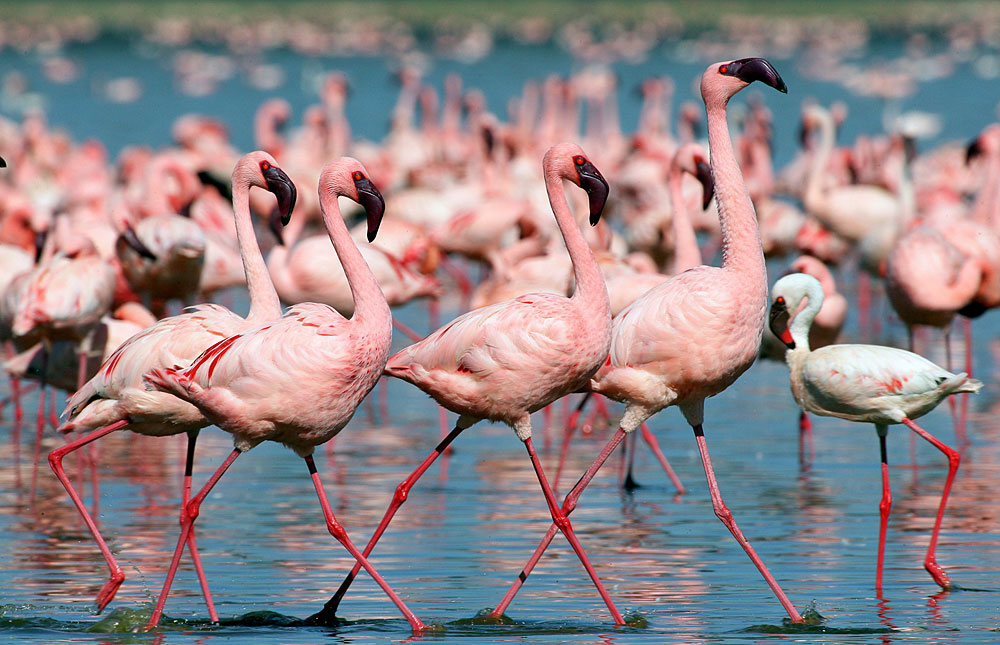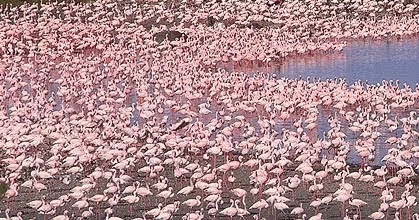

The water from the lake also does not drain out to any river or sea. Located in an arid region where rainfall is erratic, the terminal lake is fed by hot springs and small rivers. The salty crust, however, changes over time, giving the lake a different appearance each time. The lake gets its reddish hue from salt-loving microorganisms called halophiles that thrive in its alkaline waters and produce reddish pigments, which color the lake’s salt crust red.

The reasons for these frequent movements are not understood.Also Read: This Lake In Uttarakhand Contains Hundreds Of Skeletons Belonging To 800 AD What Makes Lake Natron Unique? Normally, the Lesser Flamingo is not migratory in the accepted sense but is highly nomadic, moving daily in large numbers from lake to lake within the Rift Valley and amongst the saltpans of southern Africa. However, this has not been shown definitively and their flight paths, flight speed and stopover places are still unknown. However, circumstantial evidence has been assembled that indicates East African Lesser Flamingos may fly to Botswana to breed during periods when the Lake Makgadikgadi saltpans are flooded. Historically, it was thought that the two populations in East and Southern Africa are separate and that no regular interchange takes place. The Greater flamingo began their breeding later but numbers grew continuously throughout the season/ to become once again the largest breeding colony of Greater flamingos in Africa, with numbers exceeding 40,000 individuals. This is one of the largest breeding colonies of Lesser flamingo in the whole of Africa, being second in size only to the breeding colony on Lake Natron in Tanzania. The Lesser flamingos were the first to begin their breeding and by the end of January, numbers reached over 80,000 birds at their main breeding colony. Numbers have exceeded 200,000 birds and the flamingos have been breeding very successfully since they arrived in January. Two of the Lesser flamingo migrated to Kamfers Dam, near Kimberly, in the northern Cape, while the third Lesser is still in Botswana, on a small pan 150 km from Sua Pan. The other flew to South Africa, 40 km from the town of Mafeking. A recent project, carried out on the Makgadikgadi last year, is only now answering some of the questions that surround flamingo movements from the salt pans and their migration patterns around southern Africa.Of the Greater flamingos that were tracked, one went to Walvis Bay on the Namibian coast, 1250 km west of Sua. For years the origin of the flamingos that breed on the Makgadikgadi, has remained a mystery. Breeding success is dependant upon the period of inundation and the flamingos must lay their eggs and raise their young before the pans dry up in the winter season and the large flocks are forced to leave and return to their winter-feeding grounds once again. In years of good rainfall tens of thousands migrate to the inundated pans to feed and breed. The Makgadikgadi Salt Pans in northern Botswana is one of the most important breeding sites for Greater and Lesser flamingos in Africa. Here is a bit of information on flamingo in Botswana: In Tanzania - Lakes Natron, Manyara, Ndutu, Lake Magadi inside Ngorongoro crater

Lakes Elmentaita, Nakuru, Bogoria, Magadi (remote area but fantastic) These are some of the places in Kenya where you can see them in abundance.


 0 kommentar(er)
0 kommentar(er)
